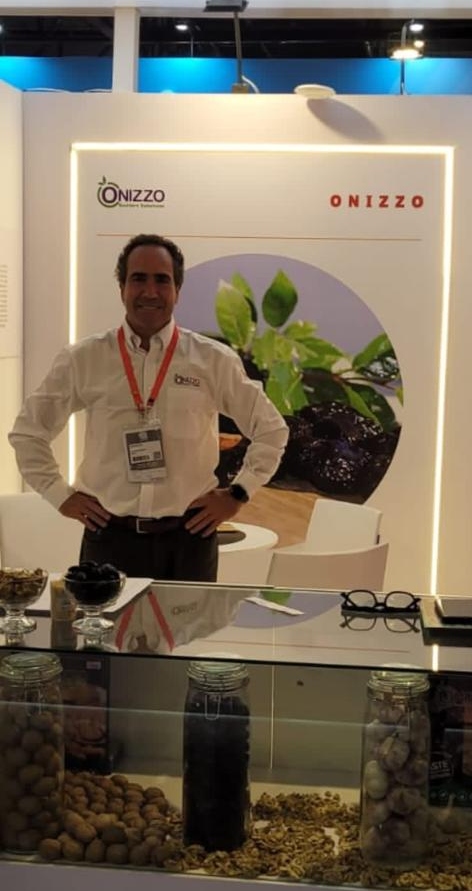Onizzo, a company associated with Chileprunes, has established itself in recent years as one of the main exporters of nuts in Chile.
They ship prunes, walnuts and garlic to more than 30 countries, and in the case of the former, for this 2023-2024 season they consider exporting 3,000 metric tons (MT), coming from around 30 suppliers in 400 hectares.
However, along with shipments of prunes – an area that the company wants to strengthen – there is an interest on the part of Onizzo and the producers to add fresh plums to their exports, says Agustín Marín, general manager of Onizzo. The above, of course, motivated by the growing interest of the Chinese market in this fruit. In the first instance, for the next season, we want to reach about 600-700 thousand kilos of fresh (equivalent to about 230 thousand kilos of dehydrated).
“The fresh plum business has been good, with significant returns in the last two years. And although there have been bad years, the trend is to get better and better,” he says and adds: “this implies a significant effort, since it is a different business, with other distribution channels, formats, types of packaging, nothing. similar to that of the prunes, but what we are clear about is that we must enter.”
International markets and consumers
Internationally, sales of prunes started in 2023 like a 100-meter dash race, at great speed, but in the second half of the year they have slowed down considerably.
70% of the sale is made for Onizzo, and they expect it to be 90% by December. There is a price issue: they were high and attractive at the beginning of the year, and now, much lower. Except for the Chinese market, there is a lot of caution in international markets, especially European ones, says Agustín Marín.
“Most of the countries in the world are in difficulties, as they were left with stock acquired at a very high price from last year. Due to price, some supermarket chains have removed them or have reduced their shelf space and consumers end up forgetting about the product. This leads to lower prices due to contraction in demand, and the balance (between supply and demand) should be a process that takes time to rebuild.”
For its part, China began paying good prices and with active demand, but being ‘natural condition’ gives a smaller margin (untenderized fruit is exported, where most of the process is done in that country).
70% of the sale is made for Onizzo, and they expect it to be 90% by December. There is a price issue: they were high and attractive at the beginning of the year, and now, much lower. Except for the Chinese market, there is a lot of caution in international markets, especially European ones, says Agustín Marín.
“Most of the countries in the world are in difficulties, as they were left with stock acquired at a very high price from last year. Due to price, some supermarket chains have removed them or have reduced their shelf space and consumers end up forgetting about the product. This leads to lower prices due to contraction in demand, and the balance (between supply and demand) should be a process that takes time to rebuild.”
For its part, China began paying good prices and with active demand, but being ‘natural condition’ gives a smaller margin (untenderized fruit is exported, where most of the process is done in that country).
China – he adds – is taking the dry equivalent of 20 thousand MT in fresh fruit, and if we add to this probably about 18 thousand MT in Natural Condition prunes, we have close to 40 thousand MT. No single destination in the world has taken this amount of fruit in a year, neither now nor before. As a comparative data, at the time, Mexico took 9 thousand, Russia 10 thousand and Europe as a whole, 30 thousand metric tons.
Another significant change in the industry is that it could be expected that in about seven years, when in China the projections of planting about 50 thousand hectares with plum trees of a variety similar to the D’agen will come into effect (Chile has 13 thousand hectares). hectares). Although the focus is on fresh plums, it is not ruled out that 20 to 30% may be dehydrated, which is a significant volume.
The harvest of fresh plums in China is against the season (July, August), so Chile should not be affected by this product; in fact, it would benefit from the promotion and marketing actions carried out by Chinese marketers of their plums. taking advantage of the January-February window and maintaining continuity of supply of fresh plums in the Chinese market.
Finally, significant steps are being taken to consolidate our prunes in the Indian market. In the short to medium term, India will become a relevant player in our exports, because let us not forget that India is an immense market that already exceeds 1.4 billion inhabitants.



